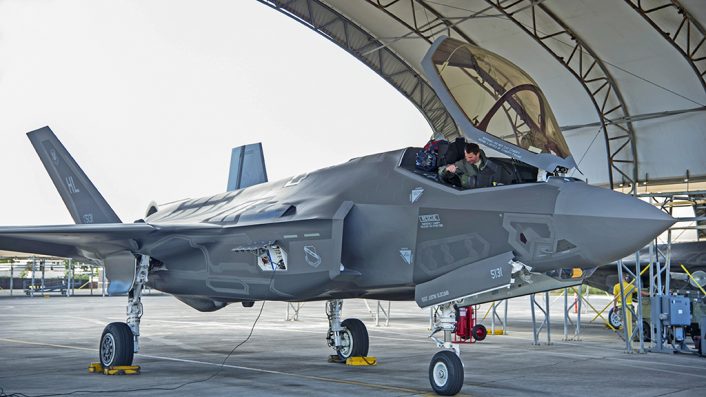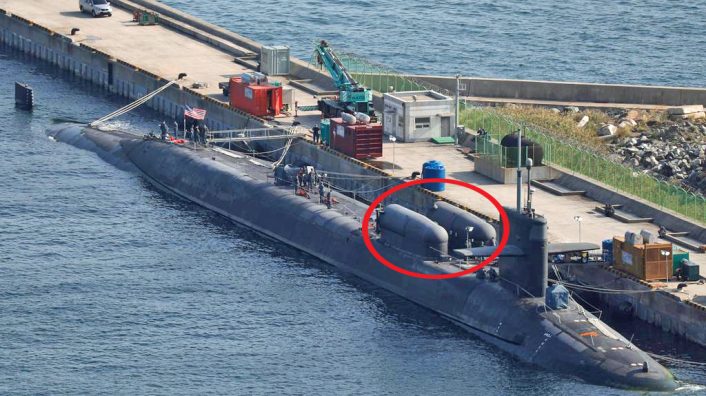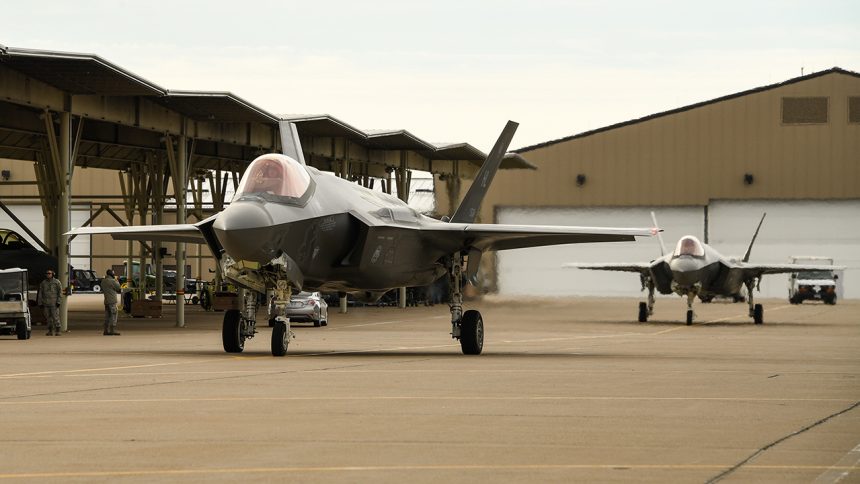Air Force F-35A Deployment Joins U.S. Marine F-35Bs to Add Capability Near Korea.
In what appears to be a continuation of U.S. preparedness in the Asian theater amidst tensions with North Korea, the U.S. Air Force has deployed the first two of twelve F-35A Lightning II joint strike fighters to Kadena Air Base in the Okinawa prefecture of Japan.
The F-35As deployed to Kadena are from the 34th Fighter Squadron, the “Rude Rams” of the 388th Fighter Wing at Hill AFB, Utah. The twelve F-35As will be supported by 300 Airmen from Hill AFB also deployed to Kadena. They are currently scheduled to remain in the region for six months according to the USAF.
USAF General Terrence J. O’Shaughnessy, Pacific Air Forces commander, said in an official statement that, “The F-35A gives the joint warfighter unprecedented global precision attack capability against current and emerging threats while complementing our air superiority fleet.” Gen. O’Shaughnessy went on to say, “The airframe is ideally suited to meet our command’s obligations, and we look forward to integrating it into our training and operations.”

The move of a significant number of combat-ready F-35As to Kadena, the largest and busiest U.S. air base in the far east, follows the August 9 deployment of three B-2 Spirit strategic bombers from the 509th Bomb Wing in Missouri to Anderson AFB in Guam (even though it must be noticed B-2s can perform round-trip missions from their homebase in CONUS as proved recently). This build-up of the most advanced U.S. air combat assets is significant. It reinforces the ongoing military pressure being applied in the region largely as a result of escalating weapons testing by North Korea.
The U.S. has also positioned the Ohio-class nuclear submarine, the USS Michigan (SSGN-727) for operations from Busan Naval base in Yongho-dong, South Korea beginning on October 13, 2017. The arrival of this submarine is significant since it is currently configured to deploy U.S. Navy SEAL special operations teams using miniature submarines from special well-decks mounted on top of its hull.

Navy SEAL special operations teams are trained to provide a number of roles in support of any potential air campaign in the region, including reconnaissance, target designation and search and rescue of downed air crews in denied areas.
The beginning of the naval exercises with the USS Michigan and other ships in the region took place between Oct. 16 – 26. An official U.S. Navy statement saying the operations would promote “Communications, interoperability and partnership” reinforces speculation that the submarine may be preparing to support larger potential combined air operations with the U.S. Navy, Marines and the Air Force.
Earlier this year we spoke with an F-35A pilot from Hill AFB after his unit made Initial Operational Capability (IOC) in August of 2016 and then deployed to Lakenheath, England, Bulgaria and Estonia in 2017. Since then the tempo of operations for the Hill AFB F-35As has been especially busy.
The U.S. Marines have already operated their F-35B STOVL (Short Take Off Vertical Landing) variant of the joint strike fighter from Okinawa, Japan when they deployed two aircraft from Marine Attack Squadron 121 (VMFA-121) of Marine Aircraft Group 12 at Iwakuni, Japan to Kadena back on June 26, 2017. The Marine Corps mission was to familiarize the F-35B operations team with the airfield at Okinawa. VMFA-121, an F-35B squadron with 3rd Marine Aircraft Wing, relocated to MCAS Iwakuni, Japan, from MCAS (Marine Corps Air Station) Yuma, Arizona, on Jan. 9, 2017.
The deployment of 5th Gen. aircraft to Japan comes as President Trump prepares for his first official visit to Asia (and Japan), amid growing nuclear tensions with North Korea.









